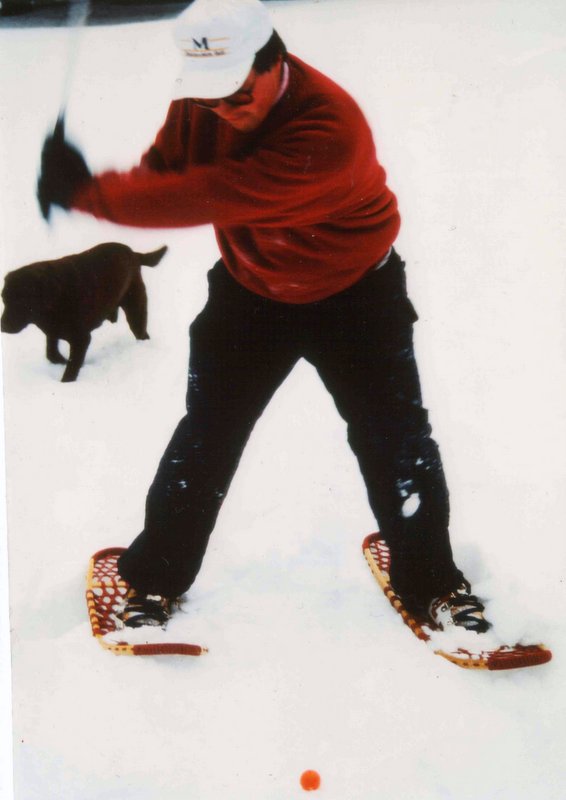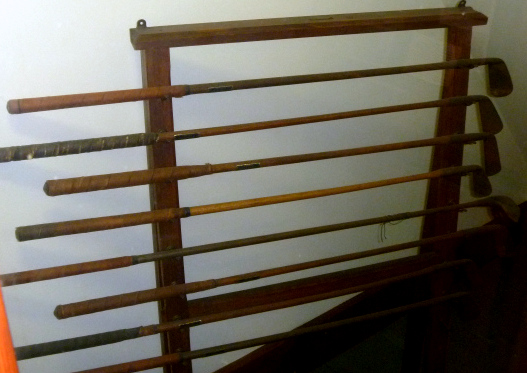buy gabapentin online overnight delivery  The weather was grim this past weekend, and the Sunday Morning Group didn’t meet. I paid bills, watched golf and football on TV, and thought about my poor, poor clubs, which were entombed in the trunk of my car:
The weather was grim this past weekend, and the Sunday Morning Group didn’t meet. I paid bills, watched golf and football on TV, and thought about my poor, poor clubs, which were entombed in the trunk of my car:
 Six or seven of us used to play golf in the snow almost every weekend through the winter. We each carried just one club, usually a 7-iron, and if the snow was deep enough we wore snowshoes. In the photo below, which is from 1996, those dark things sticking up near our feet are the tops of the posts of a split-rail fence that used to stand behind our first tee:
Six or seven of us used to play golf in the snow almost every weekend through the winter. We each carried just one club, usually a 7-iron, and if the snow was deep enough we wore snowshoes. In the photo below, which is from 1996, those dark things sticking up near our feet are the tops of the posts of a split-rail fence that used to stand behind our first tee:
Carrying just a single club is good for shot-making: You learn how to hit it long and short, high and low, hooking and slicing. We used orange or pink balls—unless the snow was so deep that color was irrelevant.
It was while playing snow golf that I learned the first principle of the golf swing: the key to power is not effort but ease. Facing a hundred-yard shot and having only a 7-iron to hit it with, I swung easy and launched my ball on a gorgeous left-bending arc into the woods beyond the green.
We walked in single file, to keep footprints to a minimum, and aimed for unspoiled patches, so that the holes our balls made when they landed would be easier to find. I learned that the surest way to track a ball is sometimes with your ears. Even in very deep snow, though, we seldom lost more than one or two.
According to the U.S. Golf Association, snow golf was invented by Rudyard Kipling, who lived in Dummerston, Vermont, for a few years in the late eighteen-hundreds. Kipling used to paint balls red and hit them into tin cans buried in snow in front of his house, which was called Naulhaka.
Kipling learned about golf from Arthur Conan Doyle, who visited Naulhaka in November, 1894. “I had brought up my golf-clubs and gave him lessons in a field while the New England rustics watched us from afar, wondering what on earth we were at, for golf was unknown in America at that time.” Conan Doyle wrote later. (Golf wasn’t quite unknown; my own club, two states to the south, was already five years old.)
I myself haven’t played snow golf since my friends and I discovered that the golf courses in New York City almost never close. But if the weather stays like this through the end of the year I’ll have to take my snowshoes out of storage.









